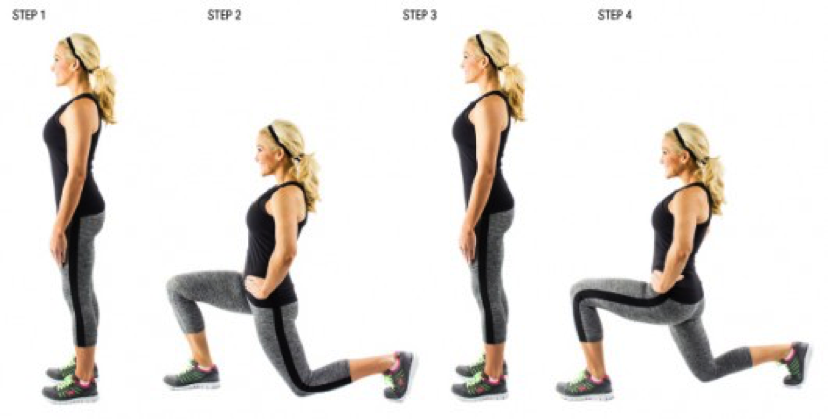How to Stay Injury-Free at the Gym
The gym is supposed to be the place we go to get stronger and keep our bodies healthy. But sometimes the gym can be the place where injuries occur, either in a single moment or slowly over time.
Following these few simple tips can help to keep you injury free and on track towards your fitness goals.
Warm Up For Your Work Out
The first thing to remember is that a proper warm up is essential to having a safe and effective gym session. Just as a sprinter warms up their muscles before a race, we too should warm up our bodies before subjecting them to strenuous exercise.
Five to ten minutes of cardio on the stationary bike, treadmill or elliptical will help get your blood circulating.
Don’t Forget To Stretch
Stretching is also an important part of a complete warm up. But you’ll want to ditch the typical stationary stretches that you probably learned in gym class and instead opt for a series of dynamic stretches pre-work out.
Dynamic stretches help your muscles to loosen up and get them prepared to move in the ways that you’ll use them during your workout. This is also a great strategy to employ before going for a run or playing in that soccer game on the weekend.
A few examples of dynamic stretches are walking lunges (add an overhead reach to really stretch out), knee hugs and shoulder circles.
READ MORE: 4 Injury-Reducing Stretches for Runners
Static stretches to increase your flexibility should also be incorporated into your fitness routine. You can either fit them in at the end of your workout or dedicate a separate session to them.
This will help to make sure you maintain your mobility as you’re gaining strength – a process which can sometimes leave you feeling tight. Decreased mobility has the potential to set you up for an injury, as it forces your body to move in a certain way – and often in a way that various body parts don’t tolerate well.
Using a foam roller to work out knots and keep muscles pliable is another way to help maintain mobility.
Maintain Balanced Strength
Another thing to consider when working out is trying to maintain balanced strength around your joints.
Problems can arise over time if the stresses on a joint aren’t equal, which puts too much stress on the structures on one side of the joint. One of the most common places for this to happen is at the shoulder, where the pectoral muscles and upper trapezius muscles can get much stronger and tighter than the muscles at the back of the shoulder blade.
This muscle imbalance sets up the front of the shoulder for a pinching or impingement of the tendons, and over time this can develop into a significant injury.
Use Proper Technique
Proper technique is also key when looking to avoid injury at the gym. If you’re new to working out, you might not know what proper squat form looks like, or how to use a particular machine. If you’re not certain how to use a specific piece of equipment, be sure to ask one of the staff at your gym – they should be able to give you the basics of how to operate any given machine.
Another option is a personal trainer who can help show you the ropes and get you set up with an individualized program. But even if you’re not a newbie, training errors can still be an issue – over time we tend to develop bad habits which can lead to poor technique; so make sure you stay focused on the details of what you’re doing! You also want to make sure that you’re training within your limits.
Of course, the goal is to get stronger and to progress the amount of weight you’re able to use with each exercise, but you want to do so in a way that isn’t jeopardizing your safety.
If you’re finding that you’re using momentum to achieve the movement involved with a specific exercise, or that you’re feeling the work coming from another muscle group other than the one you’re targeting, or if you’re having pain somewhere, take note. You might be working with a weight that’s too heavy for you at the moment. Good technique should never be sacrificed in order to lift a few more pounds.

Rest and Apply Ice Accordingly
Sometimes though, despite our best efforts, we can develop issues that interfere with our training. Perhaps the most important thing to remember is to not ignore any aches and pains that may pop up.
Resting and icing a new injury is usually a good place to start, resuming workouts only if pain-free. And if it seems like you may have done something more than just a minor tweak, then get it checked out! Similarly, if there’s a nagging pain that just won’t go away, but it isn’t stopping you from working out – get it checked out! You could be doing more damage by continuing to train through the pain.
If you’re not sure if what you’re feeling is a problem or not, then have it assessed by a professional. As movement specialists, physiotherapists are a great place to start. They can help identify the specific problem and put together a plan to help you get back to your regular routine. Your family doctor, chiropractor and massage therapist may also have a role to play in helping you get back to being pain-free and training regularly. A great support team is invaluable!
Christina Mattiello MPT, BSc. Kin.M
Registered Physical Therapist
Acupuncture Certified



No Comments